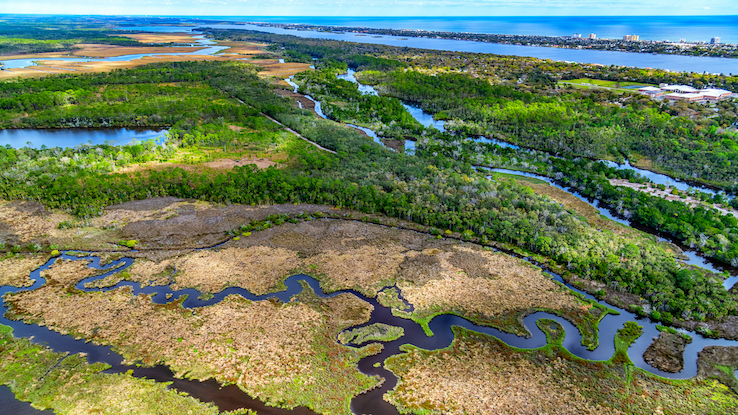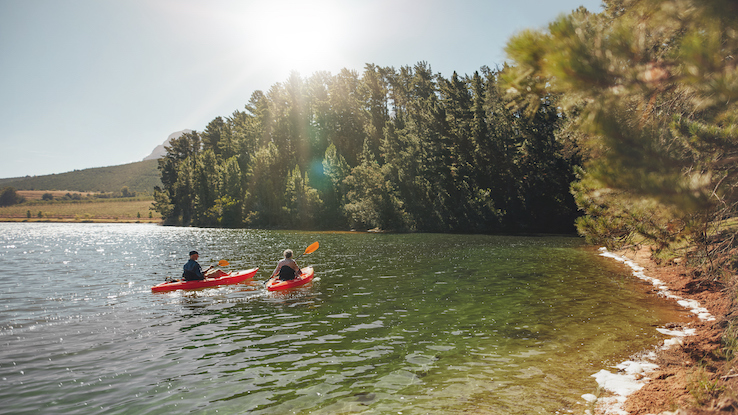Why Are Watersheds Important?

Did you know that you live in a watershed? Whether it’s a snowy forest or a desert mesa, every square mile of land on Earth is part of a watershed that belongs to one water system or another. We might not be able to see these networks of water systems, and they might be connected to larger bodies of water that are far away from us, but watersheds are still important for a number of reasons.
Watersheds play vital roles in influencing and maintaining the health of our environment. Everything — from us to the plants and animals near us — needs water in some way, and watersheds can determine how well we’re able to get the water we require. But that’s not the only reason why they’re important parts of Earth’s ecosystems. Learn more about their roles to better understand why we need to take steps to protect watersheds.
What Are Watersheds?

The water that fills a river, a lake, a stream or another body of water comes from various places. Some of it comes from rain that lands directly in the body of water. Much of the water enters the river, lake or stream as runoff that drains from the surrounding land. The land that feeds runoff water into a particular body of water is called a watershed.
One area of land can be a watershed for multiple bodies of water. Some watersheds are very close to the body of water the land drains into, and other watersheds are far away from the associated river, lake or stream. This means watersheds can be small, like the size of a city block, or very large, depending on what they drain into. The Mississippi River Watershed is the largest in the United States. The land that encompasses that watershed covers more than half of the states in the country and a few Canadian provinces.
How Do Watersheds Help an Ecosystem?

Because watersheds cover a wide area of land, they represent all of the biotic (living or once-living, like plants and animals) and abiotic (non-living, like soil and minerals) factors in an ecosystem. Nearly all plants and animals need water to survive, so a watershed helps an ecosystem by providing the right conditions to protect the body of water that the local wildlife depends on.
When there’s enough vegetation in a watershed, there’s enough food for the animals that live there. It takes a variety of native plants and trees to keep all the animals in an ecosystem fed. Animals help to pollinate plants, and they even help aquatic life. For example, some plants are pollinated when pollen or seeds catch on the fur of the animals that eat the plant. From there, animals act as pollinators, spreading the seeds to new areas or spreading pollen from one plant to the next.
Some species of birds help the fish lifecycle by unknowingly transporting fish eggs on their feet when they move between bodies of water in search of food. A body of water is a complex ecosystem, and it relies on biotic factors that live outside of the water to thrive. When the entire watershed is healthy, the right mix of plants and animals living within it supports a healthy life for everyone and everything that uses the body of water.
A healthy watershed lacks pollution that could kill the aquatic creatures in the water and harm other plants and beings that use the water. Water pollution, air pollution and deforestation are examples of human activities that can throw this system out of balance and create an unhealthy watershed.
What Are the Benefits of Watersheds?

Watersheds help to reduce the amount of greenhouse gases in the atmosphere. Carbon dioxide is a greenhouse gas that human activity creates, and it’s also a byproduct of Earth’s natural processes. The lifecycles of plants and animals release a lot of carbon into the atmosphere. In a healthy watershed, soil and bodies of water store some of that carbon and prevent it from entering (and damaging) the atmosphere. When a watershed is unhealthy, the soil and water can’t store as much carbon as they should. This leads to more carbon dioxide in the environment. This leftover carbon dioxide mixes with carbon dioxide that enters the air from human activity. Ultimately, that worsens the effects of climate change.
When a watershed is healthy, the body of water it feeds into has the right amount of water. It’s neither overflowing nor lacking enough water to support life. There’s sufficient vegetation around the body of water to slow and filter any runoff that drains into the water. The soil holds healthy plant root systems to allow water to flow evenly. These conditions allow the body of water to manage natural disasters such as floods. If topsoil is loose during a flood, mudslides can happen, or excess sediment could fill the body of water. The same conditions could cause a flood in an unhealthy watershed that wouldn’t cause a flood in a healthy watershed.
Invasive species can destroy an ecosystem. An unhealthy watershed could invite invasive species of plants or animals that aren’t native to an area. When introduced, the native species can drive other species into endangerment or extinction because it doesn’t have any natural predators in the area. The species that belong in the ecosystem may lack adaptations that protect them from invasive species.
A healthy watershed is a healthy, balanced ecosystem with the correct variety and quantities of natural resources. When there are healthy levels of plant and animal species in a watershed, it’s more difficult for an invasive species to thrive. Watersheds that function well support healthy levels of biodiversity.
Why Is It Important to Protect Watersheds?

You can help your local watershed by picking up litter, especially if it’s around a storm drain. Be sure to pick up waste from your pets, and don’t pour cooking oil, cleaning products or other liquid waste onto the ground. When gardening, plant species that are native to your area.
Water is essential for life on Earth. Watersheds directly impact water quality, which in turn impacts living things around the planet. Even in a desert, every bit of land is part of a watershed for at least one body of water. Protecting watersheds means protecting water and all of the plants and animals that need water to survive.
Climate change and severe weather are two major issues impacting ecosystems worldwide. Healthy watersheds help to combat both of these problems. Maintaining healthy watersheds can help lessen the impacts of forest fires or catastrophic flooding from a hurricane. Watersheds include all parts of the environment, and they serve as a vital reminder that each small area is connected to the larger global environment. Healthy watersheds promote a healthy Earth.





